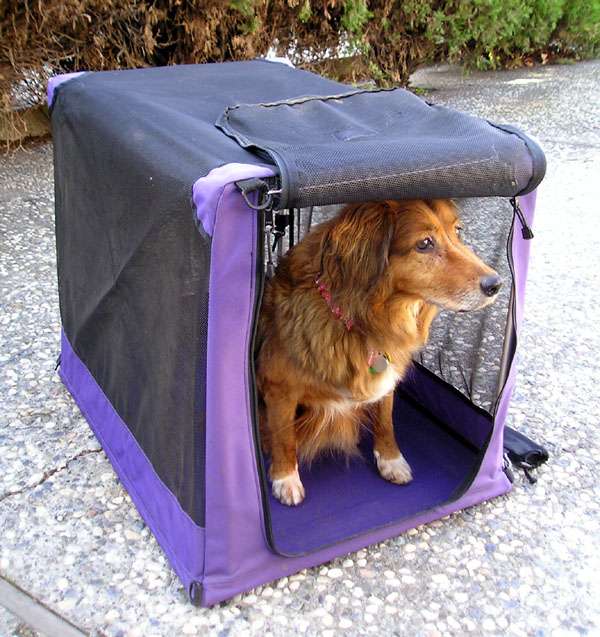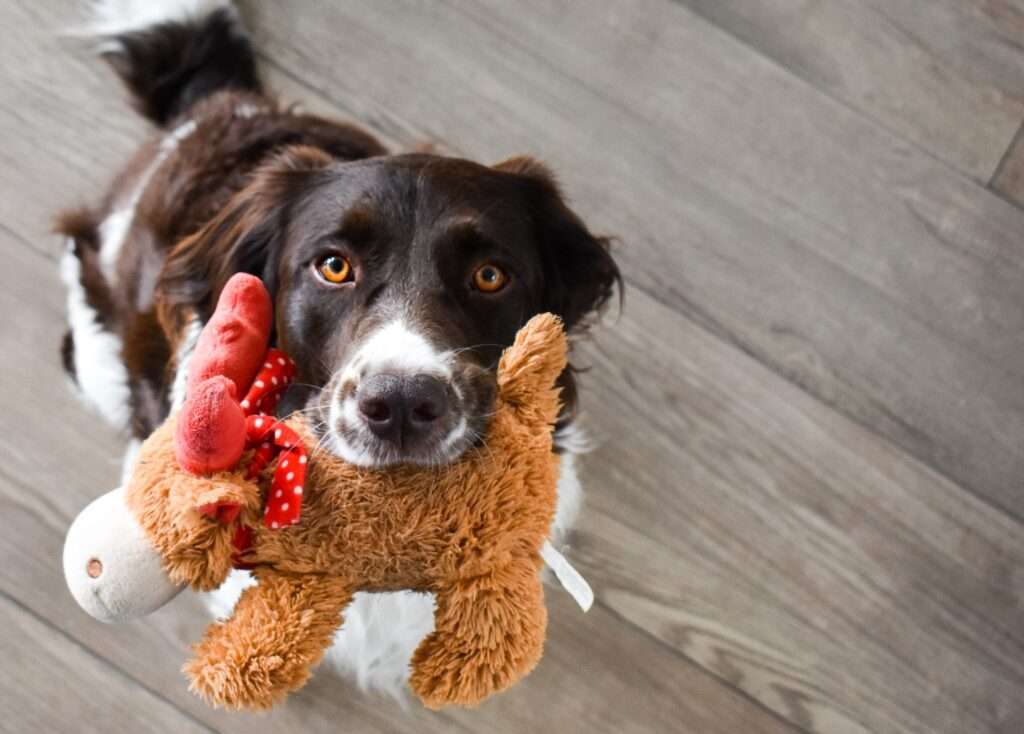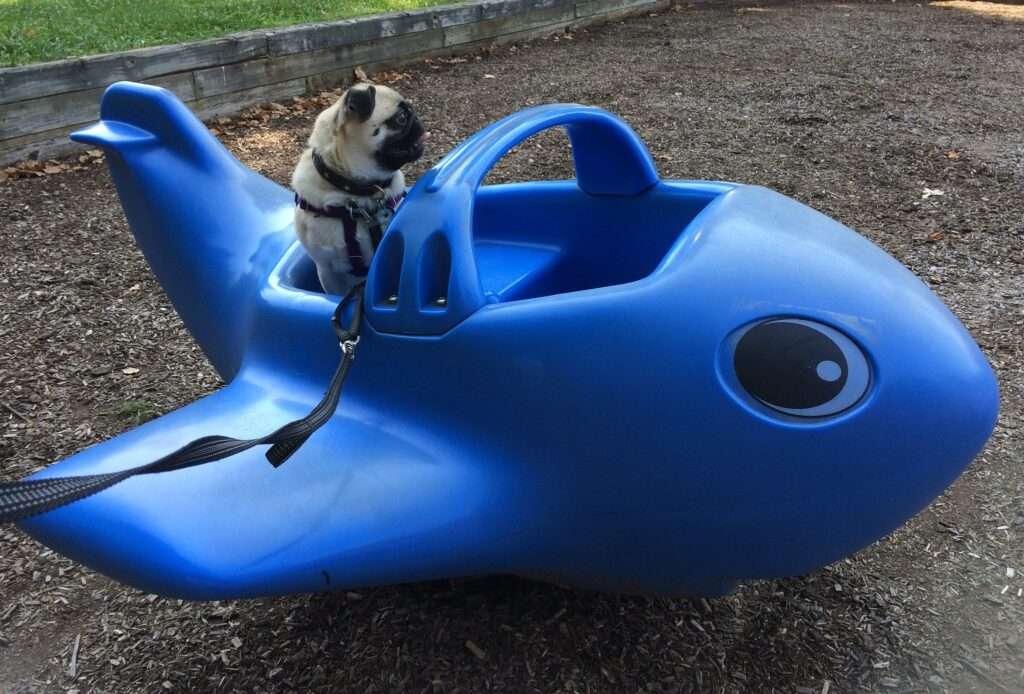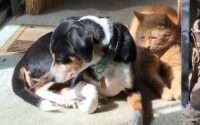How to Fly with a Large Dog: Expert Advice for a Smooth Journey
Are you planning to fly with your large dog? You’re not alone! Many pet owners choose to bring their furry friends along for the ride when they travel by air. Traveling with your furry companion can be an exciting adventure, but when it comes to flying with a large dog, things can get a little tricky.
Whether you’re relocating to a new city or taking a vacation with your furry friend, it’s important to plan ahead and make sure you and your dog are prepared for the journey.
In this article, we’ll provide you with all the information you need on how to fly with a large dog. From preparing your dog for air travel to choosing the right airline, booking your flight and getting through airport security, we’ve got you covered. So let’s get started!
Preparing Your Dog for Air Travel

Preparing your dog for air travel is an important step in ensuring a smooth journey. Here are some tips to help your furry friend get comfortable with their crate or carrier and make the flying experience less stressful for both of you:
- Choose the Right Crate or Carrier: When it comes to selecting a crate or carrier for your dog, size is key. Your dog should be able to stand up, turn around, and lie down comfortably. Additionally, make sure the crate is sturdy and well-ventilated.
- Crate Training: Crate training is an important step in preparing your dog for air travel. Start by introducing your dog to the crate gradually and making it a positive experience by offering treats and praise. Increase the time your dog spends in the crate gradually, until they’re comfortable spending several hours in it.
- Familiarization with Flying: To help your dog get comfortable with the experience of flying, consider taking them on short trips in the car or to the airport to get them used to the sights and sounds of travel. Additionally, consider using pheromone sprays or other calming remedies to help your dog stay relaxed during the flight.
By following these tips, you can help your furry friend feel more comfortable and confident during their journey in the sky.
Researching Airline Policies
Not all airlines are created equal when it comes to flying with large dogs. Some airlines have strict policies or fees that make it difficult or expensive to travel with your furry friend. Before booking a flight with your large dog, it’s important to research airline policies to ensure you choose the right one for you and your furry companion. Here are some things to consider:
- Fees: Some airlines charge a fee for traveling with pets, which can vary widely. Make sure you factor this into your budget when booking your flight.
- Weight Restrictions: Airlines often have weight restrictions for pets, so make sure your dog meets the airline’s requirements. If your dog is too heavy, you may need to book a separate seat or consider ground transportation.
- Breed Restrictions: Some airlines may have breed restrictions, so make sure your dog’s breed is allowed on the airline you choose.
- Documentation: Airlines require specific documentation for traveling with pets, such as health certificates and vaccination records. Make sure you have all necessary documents in order before traveling.
Additionally, consider the airline’s reputation for pet travel. Look for reviews or ask for recommendations from other pet owners who have flown with their furry friends.
Booking Your Flight
Once you’ve done your research and selected an airline that fits your needs, it’s time to book your flight. Here are some things to consider when booking a flight with your large dog:
- Direct vs. Connecting Flights: Direct flights may be less stressful for your dog than connecting flights, as they minimize the amount of time your dog spends in transit. However, direct flights can also be more expensive and may not be available for all destinations.
- Peak vs. Off-Peak Travel: Traveling during off-peak times can make the experience less stressful for both you and your dog, as airports and flights are generally less crowded. Additionally, airlines may be more accommodating during off-peak times.
- Notify the Airline: When booking your flight, make sure to notify the airline that you’ll be traveling with a large dog. This will ensure that they have space available for your furry friend and that all necessary arrangements are made in advance.
By keeping these tips in mind, you can ensure a smooth booking process and minimize stress for both you and your furry companion.
Preparing for the Flight

Now that you’ve booked your flight, it’s time to prepare for the journey. Here are some tips to help make the experience as smooth as possible:
- Comfort Items: Pack your dog’s favorite toys, blankets, and other comfort items in their crate or carrier to help them feel more at ease during the flight.
- Get your dog used to their crate: If your dog is traveling in a crate, make sure they are comfortable spending time in it before the flight. Start by introducing them to the crate gradually and giving them treats and praise for positive behavior.
- Feeding: Avoid feeding your dog a full meal before the flight, as this can increase the likelihood of motion sickness. Instead, feed them a light meal a few hours before the flight.
- Hydration: Make sure your dog has access to water before and during the flight, as hydration is important for their comfort and well-being.
- Exercise: Give your dog plenty of exercise before the flight to help them relax and sleep during the flight.
Getting Through Airport Security
Getting through airport security with a large dog can be a challenge, but with the right preparation, it can be a smooth process. Here’s what you need to know:
- Arrive Early: Arrive at the airport early to allow plenty of time to get through security and make it to your gate on time.
- Bring necessary documents: Make sure to bring any necessary documents, such as your dog’s health certificate and proof of vaccinations, as well as their identification tags and travel information.
- Leash and Collar: Keep your dog on a leash and in their collar until you reach security. At that point, you’ll need to remove the collar and leash and place them in your carry-on bag.
- Crate Inspection: Before you go through security, you’ll need to remove your dog from their crate or carrier so it can be inspected. Make sure your dog is calm and comfortable before doing so.
- Security Screening: You’ll need to go through the metal detector or full-body scanner while your dog is being inspected. Your dog will be inspected separately and will need to be leashed and under control at all times.
- Stay calm and positive: Your dog may pick up on your emotions, so it’s important to stay calm and positive during the airport experience.
By following these tips, you can facilitate a hassle-free experience for both yourself and your furry friend while passing through airport security.
Boarding the Plane
When it’s time to board the plane, there are a few things to keep in mind to ensure a smooth process:
- Board Early: Board the plane as early as possible to allow plenty of time to get your dog situated in their seat or crate.
- Follow Airline Rules: Follow all airline rules and regulations regarding traveling with pets, including any weight or breed restrictions, as well as any crate or carrier requirements.
- Stow Crate or Carrier: Stow your dog’s crate or carrier under the seat in front of you, as this is the safest place for them during the flight.
- Communicate with Flight Attendants: Let the flight attendants know that you’re traveling with a large dog and ask if there’s anything they can do to help make the experience more comfortable for your furry friend.
During the Flight

Once you’re in the air, there are a few things you can do to help your dog stay comfortable and calm during the flight:
- Provide water: Make sure to provide your dog with water during the flight to prevent dehydration. You may want to bring a collapsible water bowl or use one provided by the airline.
- Comfort Items: Give your dog their comfort items, such as toys and blankets, to help them feel more relaxed.
- Avoid Sedation: Avoid sedating your dog unless recommended by your veterinarian, as sedatives can have unpredictable effects at high altitudes.
- Stay calm: If your dog becomes anxious during the flight, stay calm and speak to them in a soothing voice. Try to distract them with treats or toys if necessary.
- Follow airline regulations: Make sure to follow all airline regulations related to pet travel, such as keeping your dog in their carrier or crate during the flight.
By following these tips, you can help ensure a comfortable and stress-free flight for both you and your furry companion.
After the Flight
Once you’ve landed, there are a few things to keep in mind as you make your way through the airport and to your final destination:
- Leash and Collar: Once you’ve left the plane, reattach your dog’s collar and leash before exiting the airport.
- Crate or Carrier: Retrieve your dog’s crate or carrier from the baggage claim area, if necessary.
- Stretch Legs: Give your dog a chance to stretch their legs and go potty before continuing your journey.
- Rehydrate your dog: Make sure to offer your dog water to help them rehydrate after the flight.
- Monitor Health: Monitor your dog’s health closely over the next few days to ensure they’re not showing any signs of stress or illness.
- Give your dog time to recover: Your dog may need some time to recover from the journey, so make sure to give them plenty of rest and relaxation.
By taking these steps after the flight, you can help ensure a smooth transition back to normal life for your furry friend.
Conclusion
Flying with a large dog can be a challenge, but with proper preparation and planning, it can also be a rewarding and stress-free experience for both you and your furry friend. By following the tips outlined in this guide, you can help ensure a safe and comfortable journey for your dog, from booking the flight to arriving at your destination.
Remember, every dog is different, and what works for one may not work for another. Be sure to consult with your veterinarian and the airline to make sure you’re meeting all requirements and recommendations for pet travel. With a little patience and preparation, you and your furry friend can take to the skies together and create memories that will last a lifetime. Bon voyage!
Frequently Asked Questions
Q: Can my large dog fly in the cabin with me?
A: Generally, no. Most airlines require large dogs to fly in the cargo section of the plane. However, some airlines may allow small dogs to fly in the cabin if they can fit in a carrier that can be stowed under the seat in front of you.
Q: How do I choose the right crate or carrier for my dog?
A: When selecting a crate or carrier for your dog, size is key. Your dog should be able to stand up, turn around, and lie down comfortably. It’s also important to choose a carrier that is well-ventilated and secure.
Q: How can I help my dog get comfortable with their crate or carrier?
A: It’s important to introduce your dog to their crate or carrier well in advance of your flight. You can do this by leaving the crate or carrier out in your home and encouraging your dog to explore it. You can also try feeding your dog in the crate or carrier to create positive associations.
Q: What should I do to prepare my dog for the flight?
A: It’s important to make sure your dog is up-to-date on all necessary vaccinations and has a health certificate from your veterinarian. You should also try to exercise your dog before the flight to help them relax and get some energy out. Finally, make sure to pack any necessary items for your dog, such as food, water, and toys.
Q: What are the weight and size restrictions for dogs flying in cargo?
A: The weight and size restrictions for dogs flying in cargo vary by airline. Generally, dogs must be at least 8 weeks old and weigh no more than 100 pounds. The crate or carrier must also meet certain size requirements.
Q: What should I do if my dog gets anxious during the flight?
A: If your dog gets anxious during the flight, there are a few things you can do to help. You can try giving them a natural calming supplement or playing calming music for them. You can also talk to your veterinarian about prescribing an anti-anxiety medication for your dog.
Q: Can I feed my dog before the flight?
A: It’s generally recommended that you feed your dog a small meal at least 4 hours before the flight. This will give them time to digest their food and reduce the risk of motion sickness during the flight.
Q: Can I sedate my dog for the flight?
A: It’s generally not recommended to sedate your dog for the flight, as it can be dangerous and cause respiratory problems. However, you can talk to your veterinarian about prescribing an anti-anxiety medication for your dog.
Q: What should I do if my dog has to go to the bathroom during the flight?
A: If your dog has to go to the bathroom during the flight, they will have to do so in their crate or carrier. You can line the crate or carrier with absorbent material and bring extra supplies to clean up any messes.
Q: What should I do if my dog is injured or lost during the flight?
A: If your dog is injured or lost during the flight, you should immediately notify the airline and airport staff. They will be able to help you locate your dog and provide any necessary medical care. It’s also important to have identification tags and microchip information on your dog in case they get lost.







